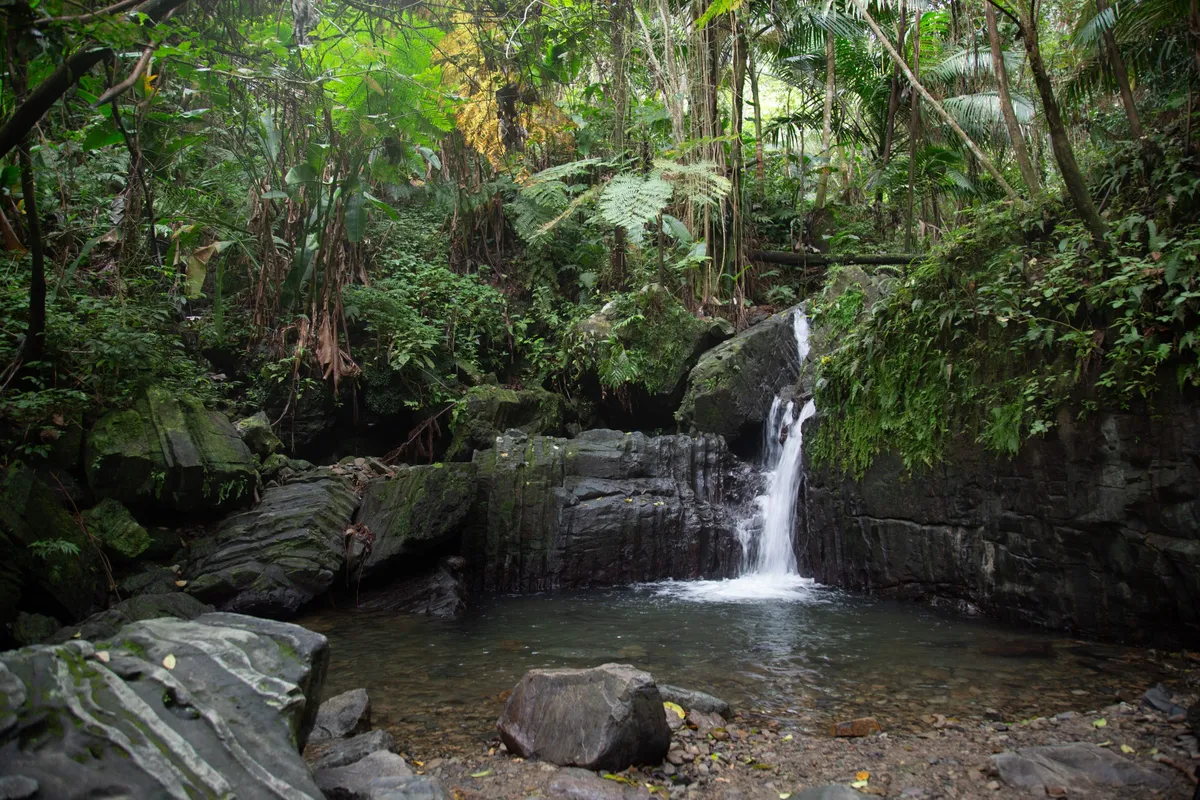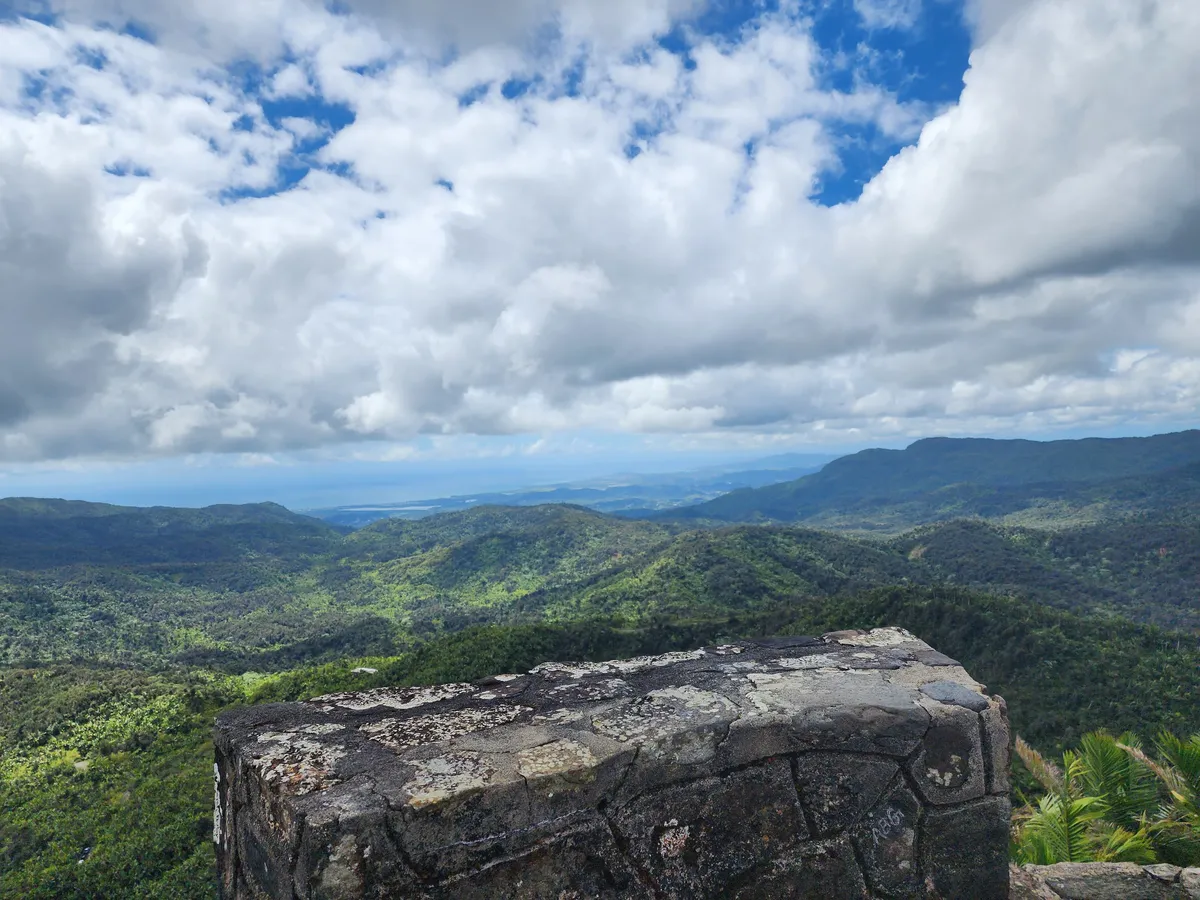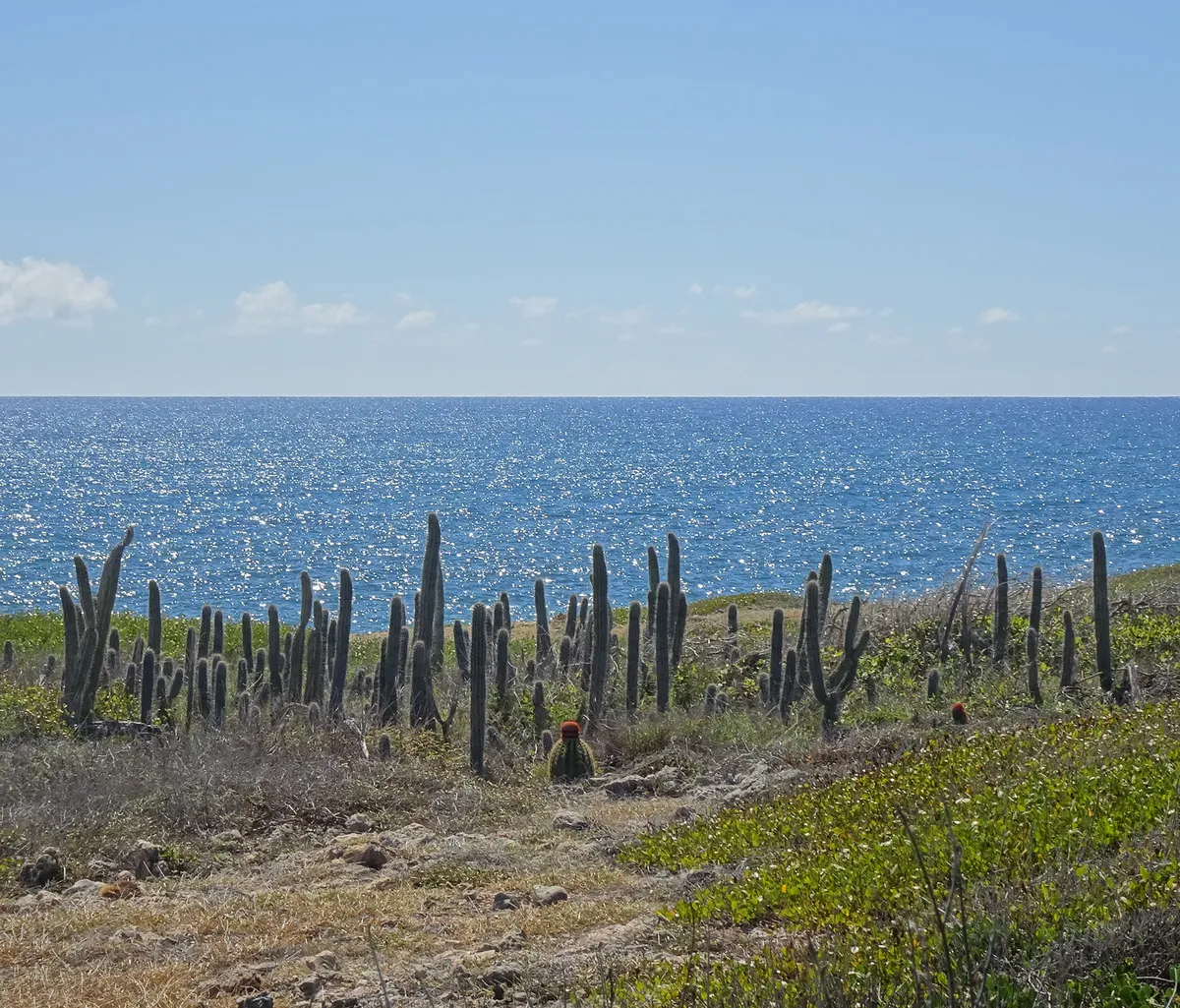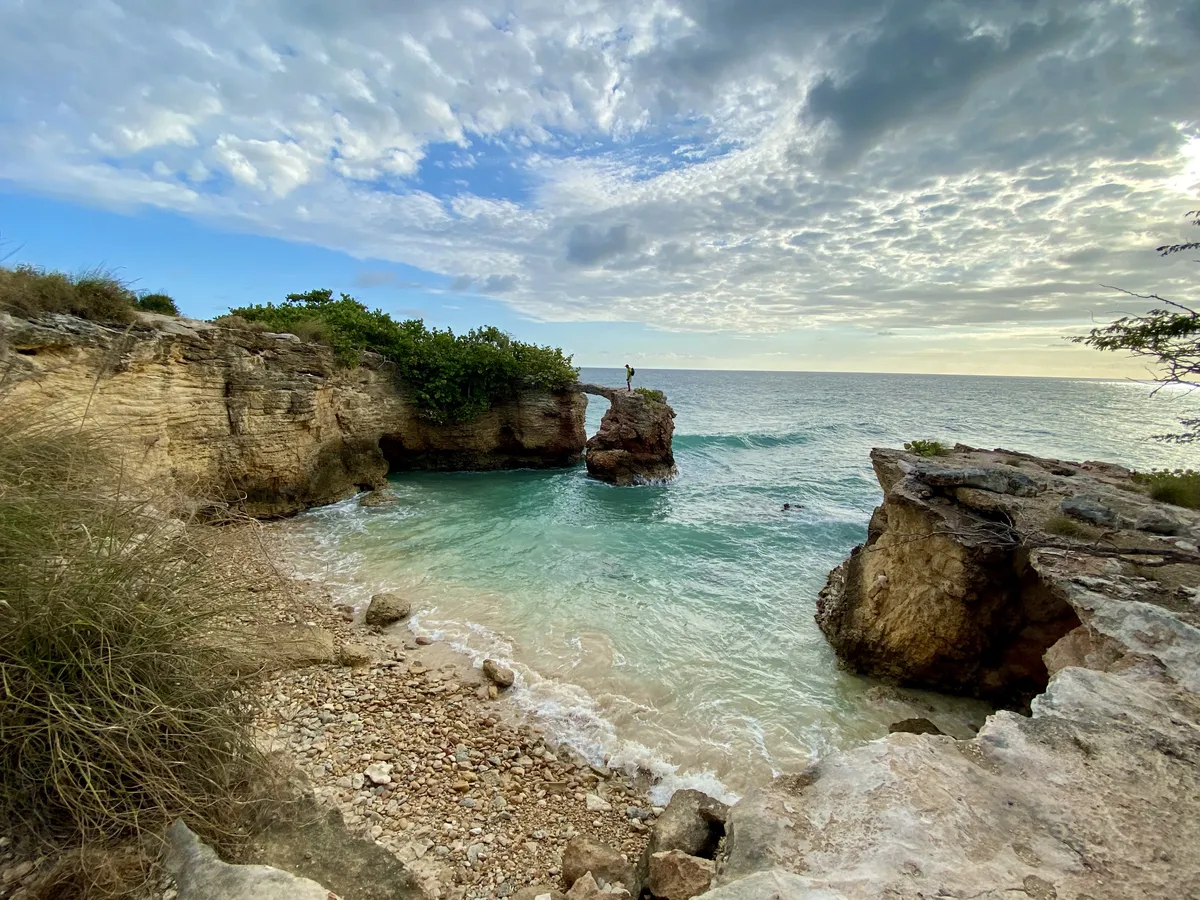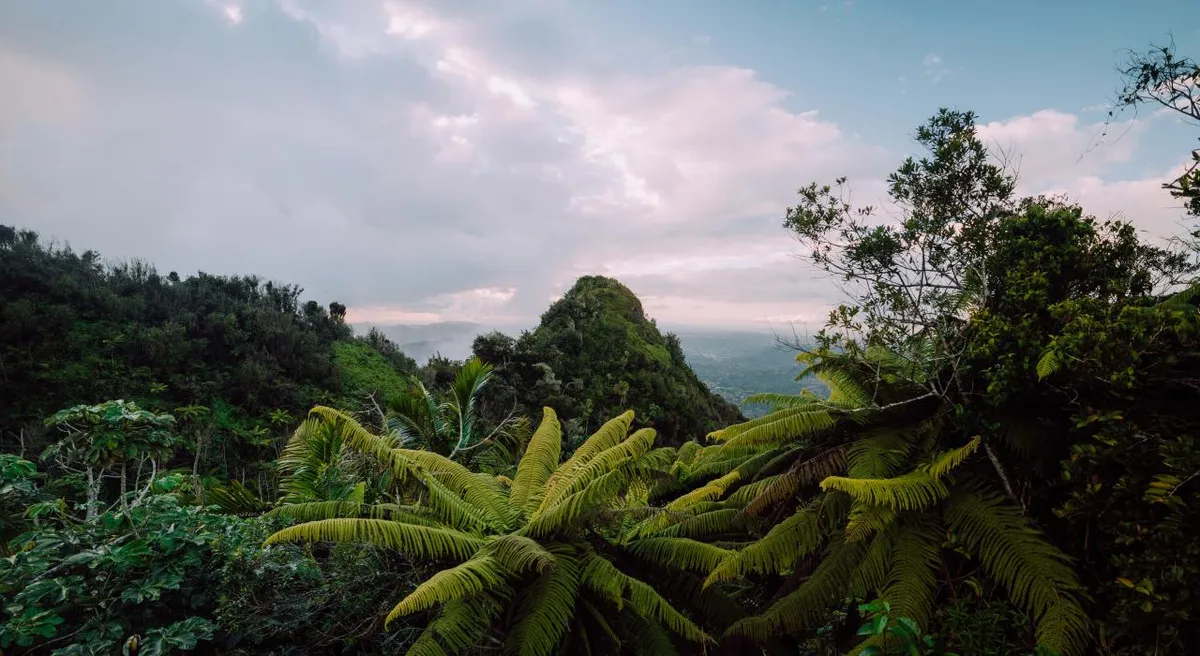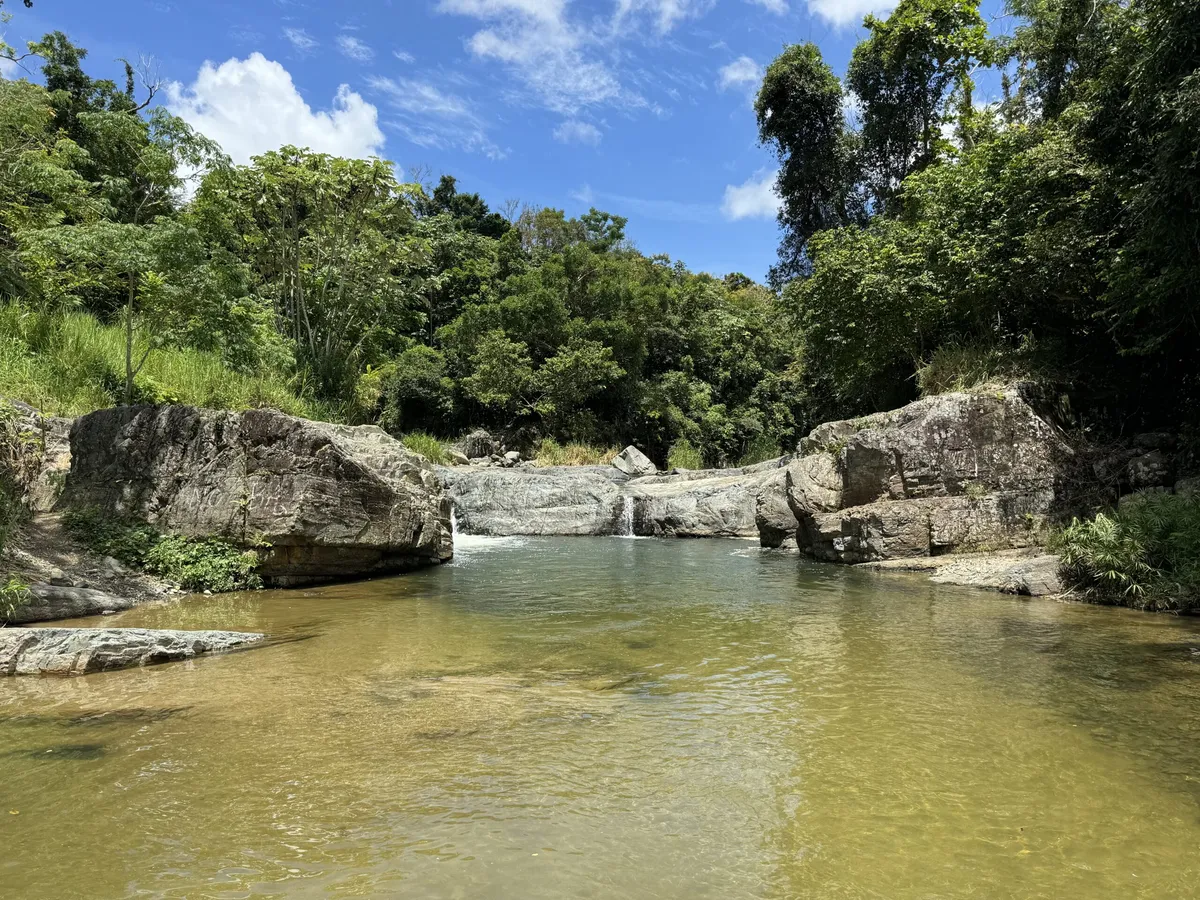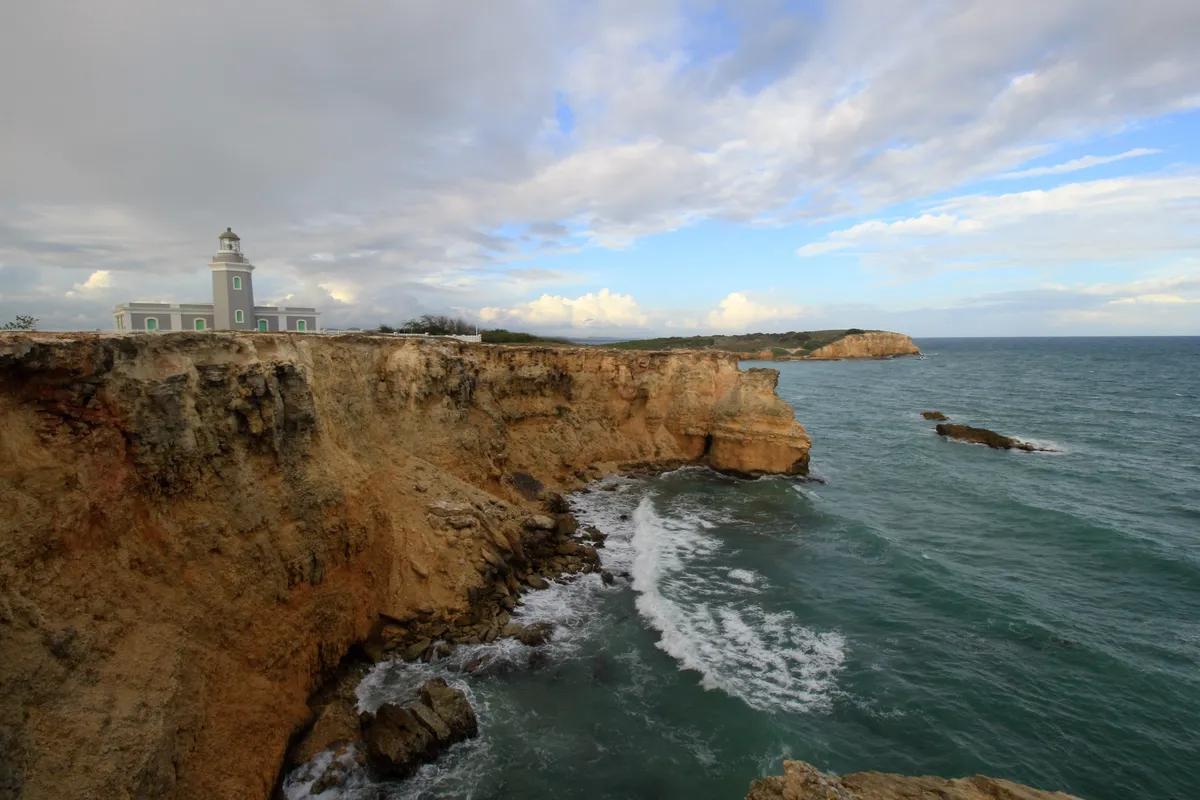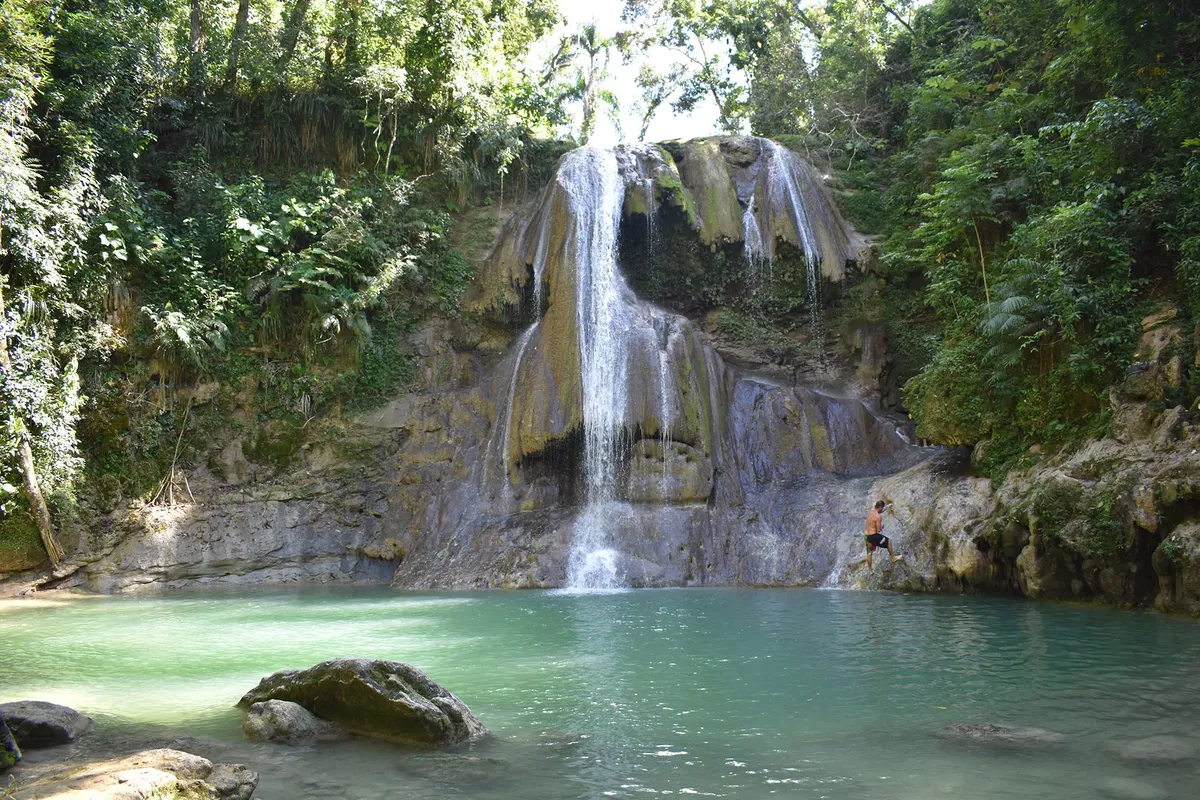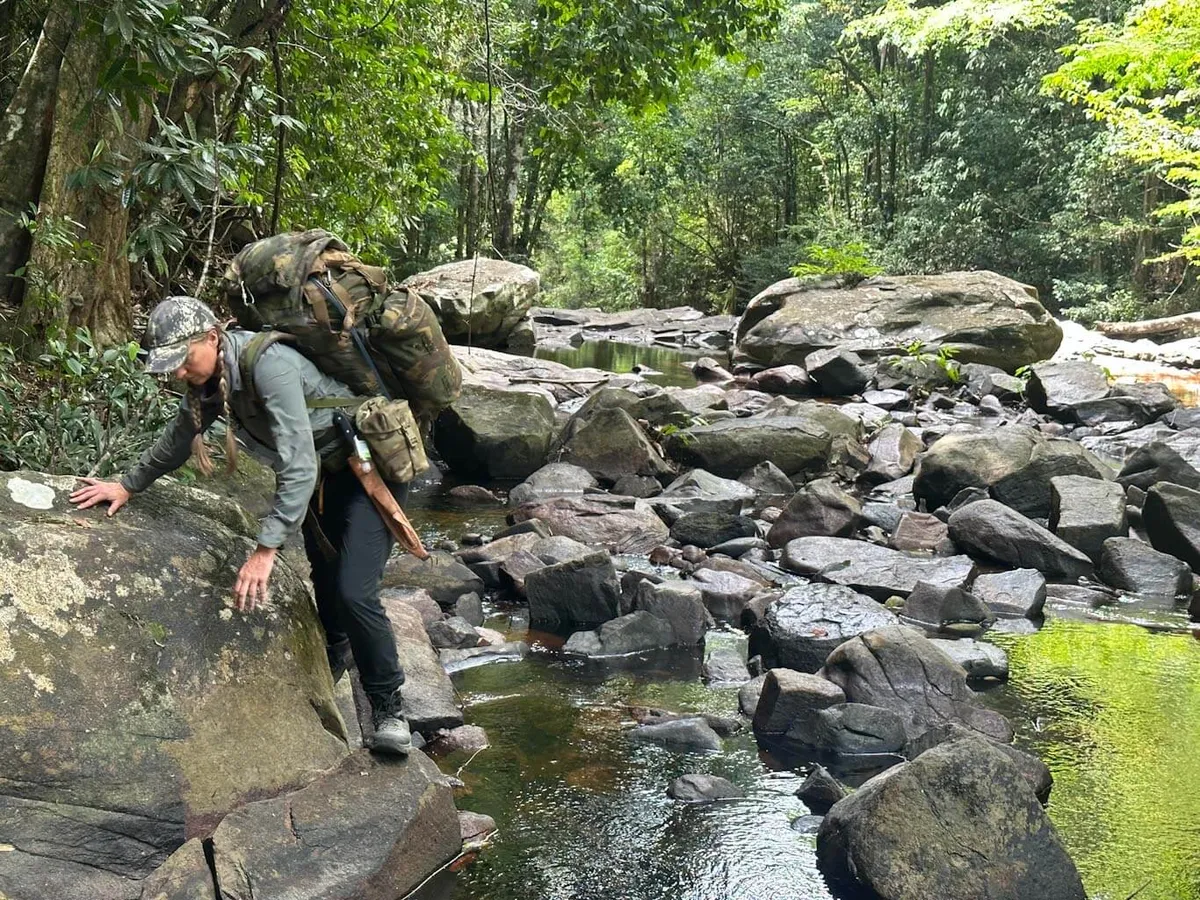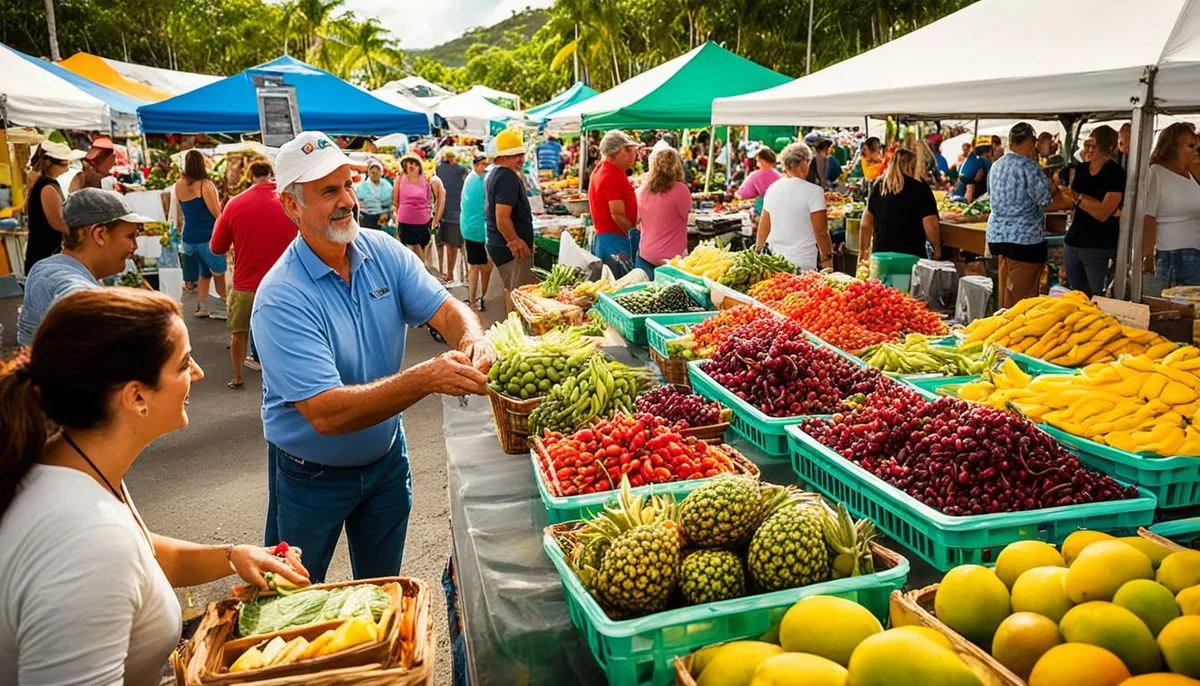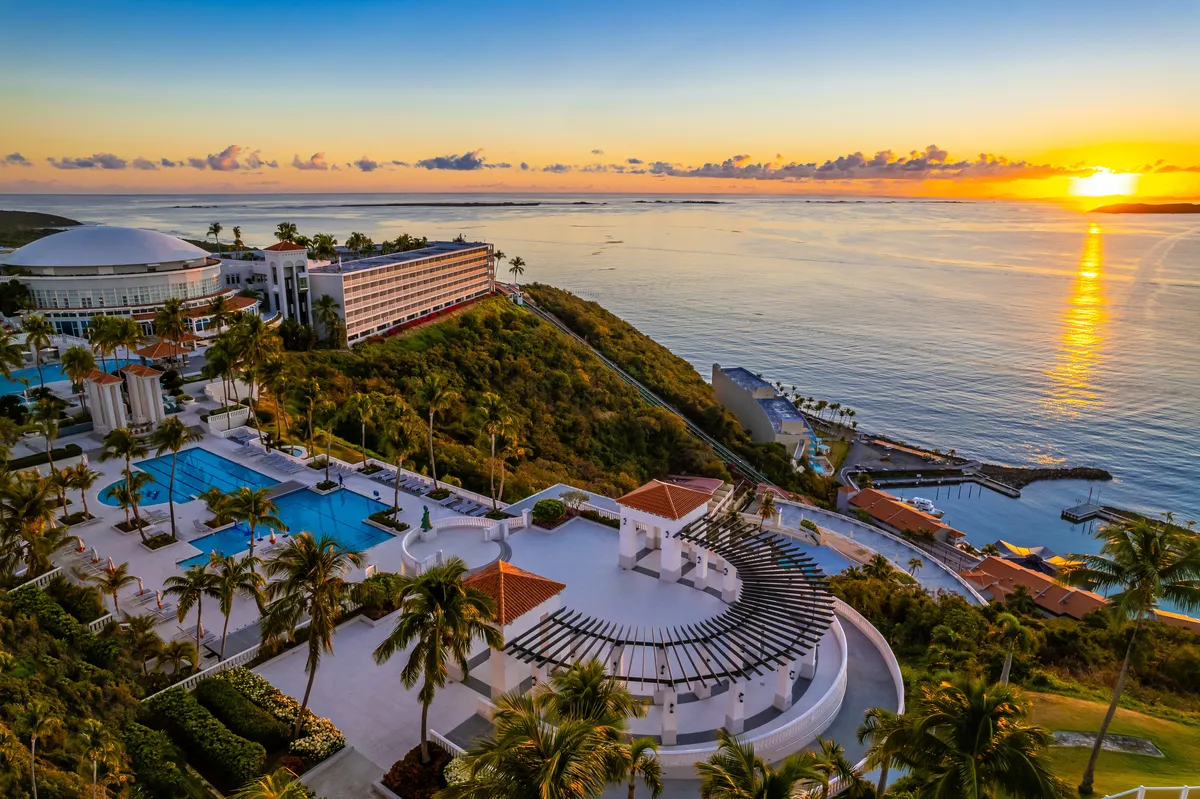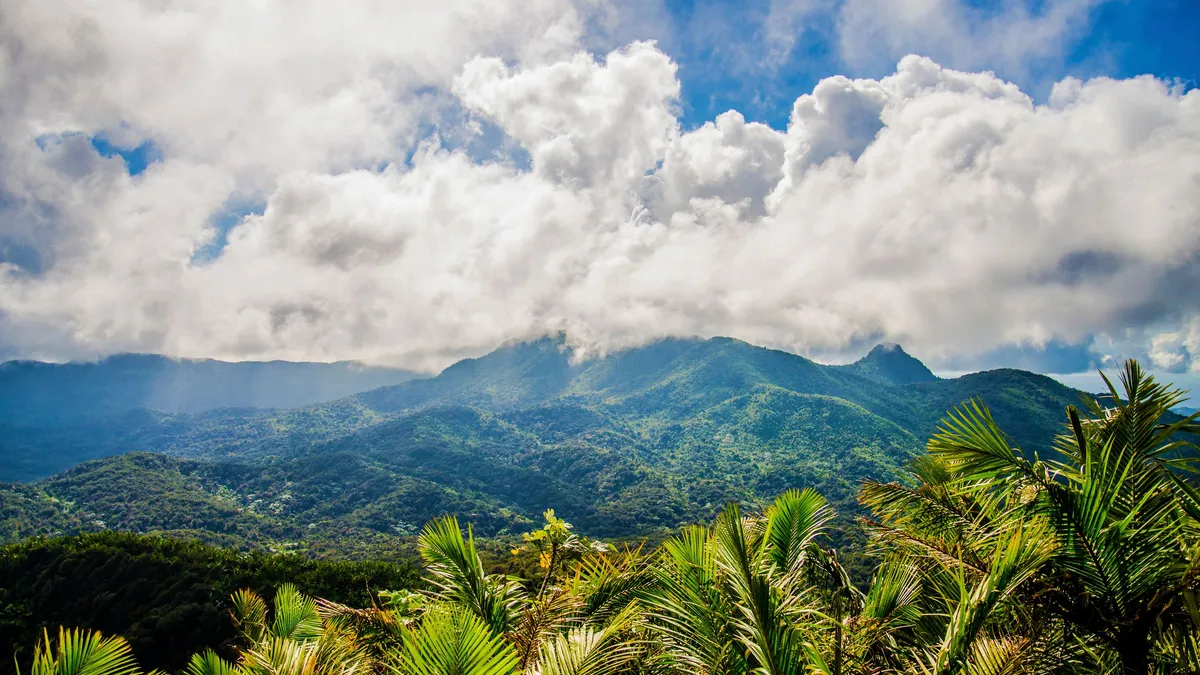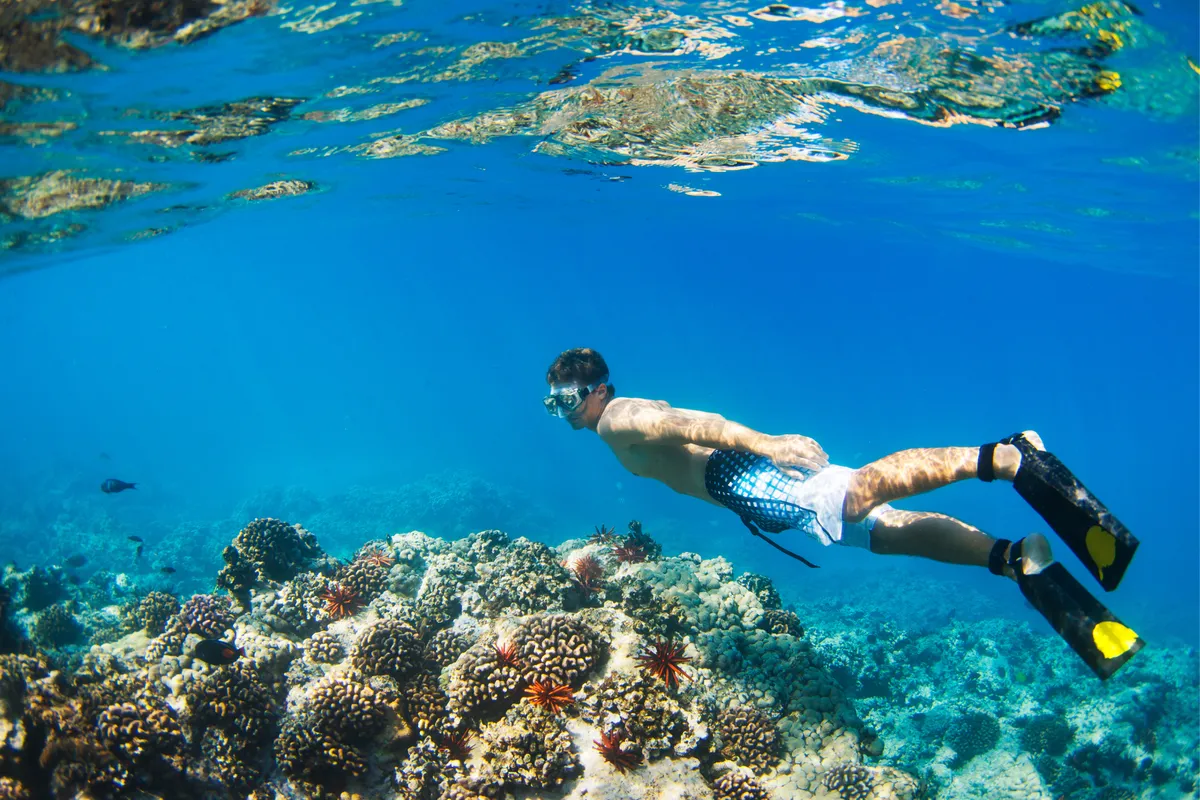Picture this: one day you’re trekking through a misty rainforest where the air hums with the calls of the tiny coquí frog, and the next, you’re navigating a sun-drenched coastal path lined with cacti while turquoise Caribbean waters crash against dramatic cliffs below. This is the extraordinary diversity of hiking in Puerto Rico—an island that packs a world of adventure within its compact shores. From verdant, waterfall-laced mountains to arid, desert-like coastlines, the trails here are as varied as they are breathtaking.
This isn’t just another list of trails. This guide is built from the ground up on the real-world experiences of hikers who have walked these paths, synthesizing dozens of trip reports, forum discussions, and travel blogs to bring you authentic tips, warnings, and insights you won’t find anywhere else. Every piece of advice is cross-referenced with official information from authoritative sources like the U.S. Forest Service and Puerto Rico’s Department of Natural Resources (DRNA), providing a trustworthy roadmap for your adventure, whether you’re planning a gentle family walk to a refreshing swimming hole or a strenuous multi-hour trek to a secluded peak.
Top Hiking Regions in Puerto Rico at a Glance
For those new to the island’s hiking scene, understanding the distinct characteristics of its primary natural reserves is the first step in planning the perfect trip. This table serves as a quick-reference guide to help you identify which major hiking area best suits your preferences.
| Region | Ecosystem | Best For | Difficulty Range | Crowd Factor |
| El Yunque National Forest | Tropical Rainforest | Waterfalls, Lush Scenery, Accessibility | Easy to Strenuous | High (Reservations often needed) |
| Guánica Dry Forest | Subtropical Dry Forest | Coastal Views, Birdwatching, Unique Flora | Easy to Moderate | Low to Moderate |
| Toro Negro State Forest | High-Altitude Cloud Forest | Solitude, Challenging Hikes, Natural Pools | Moderate to Strenuous | Low |
A Deep Dive into Puerto Rico’s “Big Three” Hiking Meccas
While Puerto Rico boasts trails across its entire landscape, three major forests form the pillars of its hiking reputation. Each offers a profoundly different environment, a unique set of challenges, and its own distinct rewards.
El Yunque National Forest: The Verdant Heart of Puerto Rico
As you drive up the winding PR-191 into El Yunque, the air cools, the humidity thickens, and the symphony of the coquí frog begins—your constant companion on this journey. This is the only tropical rainforest in the U.S. National Forest System, a fact that underscores its unique ecological significance. It’s a place of immense beauty, characterized by giant ferns, lush canopies, and an abundance of waterfalls. However, let’s set realistic expectations: it’s a rainforest, and rain isn’t just a possibility but a near certainty. As one hiker aptly noted after a downpour on their drive in, “I guess that’s what you get when you’re in a rain forest. It did slow to a misty sprinkle… so we managed to stay mostly dry.” These brief but intense showers are part of the authentic El Yunque experience.
The Good: El Yunque offers the most accessible tropical rainforest experience in the United States, with well-maintained trails ranging from easy paved walks to challenging wilderness treks. The waterfalls are spectacular, the scenery is unmatched, and the unique ecosystem provides an immersive natural experience you won’t find anywhere else in the country.
The Challenges: The reservation system can be frustrating to navigate, with tickets selling out 30 days in advance during peak season. The trails get extremely slippery when wet (which is often), and the popularity means you’ll be sharing the experience with many other visitors. Parking can be a nightmare if you don’t arrive early, and the $2 reservation fee plus a potential $8 visitor center admission adds to the cost.
El Yunque Logistics: Reservations, Fees, and Timing
Navigating the entry requirements for El Yunque can be one of the most confusing aspects of planning your hiking adventures in Puerto Rico. The park’s access policies have shifted, particularly since the pandemic and recovery from hurricanes. As of the latest updates, the main recreational corridor of El Yunque along PR-191 North requires a timed entry reservation made in advance through Recreation.gov.
To secure a spot:
- Create an account on Recreation.gov ahead of your trip.
- Tickets are released 30 days in advance—for popular travel times, book as soon as they become available.
- If your desired date is sold out, don’t despair—a limited number of additional tickets are released for the following day at 8:00 AM and 11:00 AM EST. Set an alarm and be logged in with payment information ready, as these spots are claimed within seconds.
- If you can’t secure a ticket, book a guided tour (operators have their own permits) or explore sections outside the main reservation area like Angelito Trail (via Road 988) and El Toro Trail (via Road 186).
The Fee Structure: Entry into the forest’s main corridor is technically free, but there’s a non-refundable $2 processing fee per vehicle for the reservation. Separately, the El Portal Visitor Center has its own admission fee of $8 for adults (children under 15 are free) and doesn’t require a reservation.
Top-Rated El Yunque Trails by Experience
Easy Hikes for Families and Beginners:
- Angelito Trail offers a fantastic option for those without a reservation for the main park area. Located on Road 988, this popular half-mile walk (approximately 20 minutes one-way) descends gently to a beautiful natural pool in the Río Mameyes, which is a designated Wild and Scenic River. Its accessibility and rewarding swimming hole make it a favorite for families. One hiker notes: “Ideal for families with children… The path becomes muddy after rain—nothing you can’t wash off later in the river.”
- Caimitillo Trail is one of the easiest hikes within the main recreational area, starting just south of the Sierra Palm Visitor Center. This short 0.4-mile trail is an excellent choice for a quick immersion into the rainforest, featuring giant fern trees, wildflowers, and several picnic spots with tables and barbecue pits. A Reddit user recommends a popular loop that begins here: “Starting at Caimitillo Trail, then a right towards Picachos… You park close to Sierra Palm.”
Moderate Hikes for a Rewarding Challenge:
- Mount Britton Trail & Tower stands as the quintessential El Yunque hike for many visitors, offering the best views for a moderate amount of effort. The trail is a 0.8-mile, 45-minute climb on a paved path that’s nevertheless steep and can be very slippery due to moisture and moss. Three covered rest stations are strategically placed along the ascent for those needing a break. The reward for the climb is the historic stone tower, built in the 1930s by the Civilian Conservation Corps, which provides breathtaking panoramic views stretching over the forest canopy to the Atlantic Ocean and the Caribbean Sea on a clear day. One hiker shared: “My wife and I went last spring… the highlight for us was the trail to Mt. Britton and the lookout tower. We had good visibility and great views.”
- Juan Diego Falls isn’t a single waterfall but a series of them. The lower fall, about 20 feet high, is just a short, easy walk from the road and is often crowded. The true prize for the more adventurous is the upper 40-foot waterfall. Reaching it requires a scramble up a very muddy and slippery, unmarked path on the right side of the main area. This extra effort weeds out the crowds and leads to a more secluded and impressive cascade. A hiker enthuses: “The hike up this muddy bank is somewhat sketchy, but the reward is well worth it… Only the private local guides take people to this spot, so you should have it all by yourself!”
Strenuous Hikes for Avid Adventurers:
- El Toro Wilderness Trail tops out at 3,533 feet as the highest peak in the forest, offering a profoundly different experience from the more developed paths in the main recreation area. Accessed from Road 186, this 4.9-mile out-and-back trail is a true wilderness trek. It’s often muddy, uneven, and requires climbing over fallen trees and rocks. Its seclusion is a major part of its appeal—one Reddit hiker noted it’s a “nice not populated one. Its muddy fun too.” Another warns: “This is easily the most difficult hike I have done in Puerto Rico… Avid hikers will love this trail, more casual hikers should look elsewhere.”
- La Coca Trail is another very challenging trail for experienced hikers. Starting near the beautiful La Coca Falls, this 1.8-mile one-way path descends steeply into the lower Tabonuco forest. The trail is a natural surface with difficult sections, steep slopes, and several stream crossings, culminating at the Río Mameyes. The return journey is a strenuous uphill climb. When asked for difficult trails in El Yunque, a Reddit user listed this one first: “You can try Coca Trail (Hard Trail)…”
Guánica Dry Forest: Sun-Kissed Caribbean Coast Hiking
In a stunning display of ecological contrast, the Guánica Dry Forest on Puerto Rico’s southwest coast feels a world away from El Yunque. Designated as a United Nations International Biosphere Reserve, it’s one of the best-preserved subtropical dry forests in the world. The landscape is often described as “Arizona-like,” with sun-bleached rocky soil, a variety of cacti, and stunted, twisted trees that have adapted to the arid conditions. The experience of seeing “so many kinds of cacti on a tropical island” is a common refrain from first-time visitors. The main access to the forest’s interior trails is via the narrow and winding RT 334, which terminates at the visitor’s parking area.
The Good: Guánica offers a completely different ecosystem from anywhere else in Puerto Rico, with unique flora and fauna and significantly fewer crowds than El Yunque. There are no entrance fees or complicated reservation systems, and the coastal views are absolutely spectacular. It’s a birdwatcher’s paradise with over 130 species identified within its boundaries, and the dry conditions mean trails are less muddy and slippery.
The Challenges: The lack of shade makes hiking during midday brutal, especially in summer months. You’ll need to carry significantly more water than in other areas, and there are very limited facilities—no restaurants or shops nearby. The trails can be poorly marked, and cell service is spotty at best. The heat and sun exposure make this unsuitable for young children or those not accustomed to desert-like conditions.
Top-Rated Hikes in Guánica Dry Forest
- Fuerte Caprón Trail is the most popular and well-known hike in the forest. It’s a 6-mile round-trip journey on what is essentially a packed dirt and rock road, offering very little shade. The hike can be strenuous due to the heat and sun exposure, but the payoff is immense: reaching the historic Fuerte Caprón, a rebuilt Spanish-era fortification, and being rewarded with “amazing views of Guanica Bay.” A hiker advises: “It is a bit hilly, but otherwise easy to walk. Bring lots of water, sun screen and mosquito spray.”
- Meseta Trail offers the quintessential coastal experience. This 4-mile round-trip trail begins at the end of Road 333, near the beautiful Tamarindo Beach, and traces the coastline eastward. The path winds along dramatic limestone cliffs, offering constant, breathtaking views of the turquoise Caribbean. However, a critical piece of information echoed in multiple firsthand accounts is the trail’s potential danger—the path isn’t well-marked and the cliff edges are unprotected. One hiker warns: “One weird thing about this trail is there were no trail markers… we had no idea if/when we got to the end of the trail… We did pass at least 3 grave markers along this trail, so not everyone is careful.”
- Ballena Trail is a shorter 2.5-mile round-trip trail that leads down to Ballena Bay. A notable feature along a side path is a magnificent 700-year-old Guayacan tree. While the trail is rewarding, hikers should be aware that the beach at the end isn’t suitable for swimming due to strong undertows and surf breaks.
Wildlife Spotlight
Guánica is a paradise for birdwatchers. The forest is home to about half of all the island’s terrestrial bird species, with over 130 species identified within its boundaries. It’s one of the last habitats for the endangered Puerto Rican nightjar, a bird once thought to be extinct. Trip reports frequently mention sightings of the Pearly-Eyed Thrasher, the Puerto Rican Tody, and various hummingbirds, making a pair of binoculars an essential piece of gear for any visit.
Toro Negro State Forest: The Cool, Uncrowded Cloud Forest
For hikers looking to escape the crowds of El Yunque and experience a different side of Puerto Rico’s mountainous interior, Toro Negro State Forest is the perfect destination. Located high in the Cordillera Central, this is the island’s highest cloud forest, offering a cool, misty, and serene environment. It’s frequently recommended on travel forums as the “insider’s alternative,” with one Reddit user advising, “Look up Toro Negro State Forest. It’s… not on many people’s radars since it’s state owned and not federal.” Another described it as “very similar to El Yunque with lots of trails and a couple of watering holes” but with a fraction of the visitors.
The Good: Toro Negro delivers a true off-the-beaten-path experience with virtually no crowds, no reservation hassles, and free entry. The natural pools (charcos) are pristine and less crowded than anywhere else on the island, and the cooler mountain temperatures provide relief from the coastal heat. The cloud forest ecosystem is stunning, with excellent opportunities for wildlife viewing in a peaceful setting.
The Challenges: Trails can be overgrown or poorly maintained, requiring more navigational skills and self-sufficiency. Facilities are minimal, and you’ll need to be prepared with all your own supplies. The remoteness means limited cell service and longer drives from most accommodations. Some trails are steep and genuinely challenging, not suitable for beginners or those with mobility issues.
Top Toro Negro Hiking Experiences
- Camino El Bolo & Observation Tower forms the main hiking route for many visitors—the trek to the observation tower atop Cerro Doña Juana. The journey often involves a combination of trails, with the El Bolo Trail being a primary artery. The hike to the tower takes about 40 minutes to an hour and culminates in a structure that resembles the towers in El Yunque, offering sweeping views across the central mountains. Hikers have noted that some trails can be overgrown or poorly maintained, so checking with the ranger’s office for current conditions is a wise precaution. One hiker reports: “This trail was difficult—it was uphill and slippery REALLY slippery… But when we finally made it to the tower we found some really lovely 360° views. And a great breeze!”
- Charcos (Natural Pools) represent one of the biggest draws of Toro Negro—its collection of pristine, cold-water swimming holes. The trails lead to several, with Charco de los Suspiros and Charco La Confesora being among the most popular. These natural pools, fed by mountain rivers, provide a perfect and refreshing reward after a challenging hike. One tour operator, describing their river trek in the park, calls it “hands down the best hike on the entire island” due to its beauty and seclusion.
Logistics
The main entrance to the Doña Juana Recreational Area is off PR-143, though the forest itself is accessed via several roads, including PR-563. Toro Negro also offers camping facilities, but a permit is required in advance from the DRNA.
Beyond the Main Parks: More Top-Rated Puerto Rico Hikes
While the “Big Three” forests are the cornerstones of hiking in Puerto Rico, some of the island’s most memorable treks lie outside their boundaries. These trails offer unique experiences, from dramatic coastal scrambles to easily accessible, iconic waterfalls.
Unforgettable Coastal Hikes
- La Zanja (Fajardo) is a favorite among locals, offering a truly unique reward. The adventure begins at Seven Seas beach, from which you walk east along the sand until it gives way to coastal cliffs. The trail, which can be rugged, eventually leads to a stunning natural swimming pool—a “trench” protected from the Atlantic surge by a wall of volcanic rock. The moderate 1-1.5 hour out-and-back trek requires sturdy water shoes or hiking boots for navigating the sharp rocks.
- Survival Beach (Aguadilla) is less of a traditional hike and more of a short, challenging scramble. Located on the island’s adventurous west coast, starting from the popular Surfers’ Beach, the trail requires climbing over large boulders and along steep coastal embankments. The 30-45 minute effort leads to a secluded beach dotted with giant rock formations and sea caves. It’s a photographer’s dream, but swimming isn’t advised, especially in winter when strong currents and rough waves are common.
- Cabo Rojo Lighthouse Trail (Los Morrillos) features one of the most iconic and photographed locations in Puerto Rico. The hike itself is easy, following the dramatic limestone cliffs of the island’s southwestern tip to the historic Faro Los Morrillos de Cabo Rojo. The trail offers spectacular, panoramic views of the turquoise Caribbean waters and is an unbeatable location for watching the sunset.
What makes these trails special: The coastal hikes offer something the forest trails can’t—dramatic ocean vistas, unique geological formations, and the chance to combine hiking with swimming in crystal-clear Caribbean waters. They’re typically shorter than mountain hikes but can be more technical due to boulder scrambling and uneven terrain.
The Reality Check: These coastal trails can be dangerous. Rocky surfaces are slippery when wet, cliff edges have no guardrails, and the ocean conditions can change rapidly. Strong currents and undertows make swimming hazardous in many areas, and the isolated nature of some trails means help is far away if something goes wrong. Always check tide schedules and weather before attempting coastal hikes.
Rewarding Waterfall Hikes
- Gozalandia Falls (San Sebastián) is often cited as one of the best waterfalls in Puerto Rico and is easily accessible and immensely popular. An easy 20-minute walk from the paid parking area ($10 per vehicle) leads to two distinct waterfalls with large, deep swimming holes. The upper falls even feature a rope swing and spots for cliff jumping, making it a full-day destination for both locals and tourists.
- Charco Prieto Waterfall (Bayamón) offers a taller, more impressive cascade away from the main tourist hubs. The trail, located in the mountains near Bayamón, is a moderate but short route that follows a river to the base of the falls. The reward is a stunning waterfall hidden deep in the forest, creating a wild and secluded atmosphere.
Unique Geological Adventures
- Cañón San Cristóbal stands as the deepest canyon in Puerto Rico, offering a dramatic and challenging hiking experience. Managed by the conservation organization Para La Naturaleza, the area is best explored with a guide. Hikes descend into the canyon, offering views of stunning waterfalls like El Ancón and a chance to experience a rugged, wilder side of the island’s interior.
- Cueva Ventana (Arecibo) combines hiking with caving. It’s a guided tour that takes you through two caves where you can see ancient Taíno petroglyphs and impressive stalactite and stalagmite formations. The journey, illuminated by headlamps, is home to harmless fruit bats. The experience culminates at the cave’s iconic opening—a massive “window” in the cliffside that frames a breathtaking view of the Río Grande de Arecibo valley below.
Essential Puerto Rico Hiking Guide: Planning & Safety
A successful hiking trip in Puerto Rico is about more than just choosing a trail—it’s about preparation. The island’s tropical environment presents unique challenges, from rapidly changing weather to slippery terrain.
When to Hike in Puerto Rico: A Hiker’s Calendar
Deciding when to visit involves a classic travel trade-off: ideal weather versus smaller crowds. The “best” time depends entirely on your priorities.
- The Dry Season (December to April) generally offers the most pleasant weather for hiking. During these months, you can expect less rainfall, lower humidity, and more sunshine, which means trails are less likely to be excessively muddy or slick. However, this is also Puerto Rico’s peak tourist season, so popular areas—especially El Yunque—will be significantly more crowded, and prices for flights and accommodations will be at their highest.
- The Rainy Season (June to November) coincides with the Atlantic hurricane season. While this period carries a higher risk of storms and daily downpours, it also has advantages. The forests are at their most lush and vibrant, waterfalls flow at their most powerful and spectacular, you’ll encounter far fewer tourists on the trails, and you can benefit from lower travel costs.
For many, the sweet spot lies in the shoulder months of May and November. These months can offer a favorable balance, with a lower chance of major storms than the peak rainy season but with fewer crowds than the high season. Regardless of the season, the best strategy for avoiding crowds is to hike on weekdays and start your day early. Arriving at popular trailheads at or near opening time dramatically increases your chances of securing a parking spot and enjoying some solitude on the trail.
Essential Hiking Gear for Puerto Rico
Packing the right gear is crucial for a safe and comfortable hike in Puerto Rico’s variable conditions. This checklist is synthesized from the recommendations of seasoned hikers and travel experts.
- Footwear: This is arguably the most critical item. The terrain is often wet, rocky, and slippery, even on paved paths. Sturdy, broken-in hiking shoes or trail runners with excellent grip are essential. For trails involving river crossings or swimming holes, many experienced hikers prefer high-quality hiking sandals (like Chacos or Tevas) that provide good traction when wet and dry quickly. Never wear flip-flops or smooth-soled sneakers on a trail.
- Clothing: Think lightweight, breathable, and quick-drying. Synthetic fabrics are generally better than cotton, which stays wet and can cause chafing. Pack light shorts and t-shirts, but also consider a long-sleeved shirt for sun and bug protection. A lightweight rain jacket or poncho is non-negotiable—sudden downpours are common, especially in the rainforests.
- Essentials:
- Sun Protection: The Caribbean sun is intense. Pack high-SPF, reef-safe sunscreen, a wide-brimmed hat, and UV-protective sunglasses.
- Hydration: Dehydration is a serious risk in the humid climate. Carry a reusable water bottle or hydration reservoir with at least 2 liters of water per person, especially for longer hikes in exposed areas like Guánica.
- Insect Repellent: Mosquitoes can be prevalent, particularly in forested areas and around dusk.
- Daypack: A comfortable backpack to carry your water, snacks, extra layers, and other essentials.
- For Waterfall Hikes: If your trail leads to a swimming hole, pack a swimsuit (or wear it under your clothes), a small quick-dry towel, and a dry bag to protect your phone, keys, and camera from water.
Trail Safety and Etiquette
While Puerto Rico’s trails are generally safe, the primary dangers are environmental. Heeding local advice and understanding the specific risks of a tropical climate is paramount.
- The Golden Rule: Check Weather and Trail Conditions. Conditions in the mountains can change in an instant, even if it’s sunny on the coast. Before heading out, always check the latest weather forecast and visit the official U.S. Forest Service website for El Yunque to check for any trail closures or alerts, which are common due to storm damage or maintenance.
- Flash Flood Warning: This is the most serious risk when hiking near rivers and waterfalls in Puerto Rico. Heavy rains, even miles upstream, can cause a sudden, powerful surge of water known as a golpe de agua. This can happen with little to no warning. As one local emphatically stated on a Reddit forum, “…many tourists die by going to El Yunque without researching first… the water level arises and the current can sweep you away. It has happened to manyyyy people.” If the sky darkens, you hear a roaring sound upstream, or the water suddenly becomes murky, exit the river immediately and get to higher ground.
- Slippery When Wet: This cannot be overstated. A recurring theme in nearly every firsthand account of hiking in El Yunque is the extreme slipperiness of the trails. Paved paths, rocks, and moss-covered surfaces become treacherous when wet, leading to frequent slips and falls. Wear shoes with excellent grip, take your time, and use handrails where available.
- General Safety and Etiquette: Follow standard hiking best practices. Stay on marked trails to protect the fragile ecosystem and avoid getting lost. Hike with a partner if possible, and always let someone know your itinerary and expected return time. Pack the ten essentials, including a map, first-aid kit, and extra food and water. Practice Leave No Trace principles: pack out everything you pack in, as the forests are trash-free zones.
Guided vs. Self-Guided Hikes
Deciding whether to hire a guide or explore independently depends on your comfort level, budget, and travel style. Both options offer distinct advantages.
- Pros of Guided Tours: A guided tour eliminates the logistical headaches of securing reservations for El Yunque and navigating to trailheads. Guides are experts on the local flora, fauna, and history, enriching the experience with their knowledge. They often lead groups to hidden gems and less-trafficked swimming holes and can significantly enhance safety by knowing the terrain and weather patterns. For challenging areas like San Cristóbal Canyon or off-the-beaten-path river treks, a guide is highly recommended.
- Pros of Self-Guided Hikes: Exploring on your own offers greater flexibility, allowing you to set your own pace and itinerary. It’s also the more budget-friendly option. By arriving at the park entrance at opening time, self-guided hikers can often experience the most popular trails before the large tour groups arrive. For those comfortable with navigation, apps like AllTrails can be invaluable tools for planning routes and staying on track.
Wildlife Encounters for the Curious Hiker
It’s important to manage expectations regarding wildlife in Puerto Rico. The island has no large native land mammals—bats are the only native terrestrial mammals still present. Most other mammals, such as the mongoose, were introduced.
What You WILL Hear: The most ubiquitous sound in Puerto Rico’s forests is the call of the coquí frog. These tiny amphibians are mostly nocturnal, so their “ko-kee” chorus becomes most prominent at dusk and after dark, providing a magical soundtrack to any evening walk.
What You MIGHT See: With a keen eye, you can spot a variety of fascinating creatures. Small lizards, particularly various species of anoles and geckos, are abundant on tree trunks and rocks. Birdwatching can be very rewarding. Look for the tiny, vibrant Puerto Rican Tody with its bright green feathers and red throat, the yellow-bellied Bananaquit, and the striking Puerto Rican Woodpecker. In El Yunque, there’s a small chance of spotting the critically endangered Puerto Rican Parrot, especially in the area around the El Portal Visitor Center where a recovery program is based.
Hiking in Puerto Rico offers a spectrum of experiences as rich and diverse as its culture, from the cloud-wrapped peaks of the Cordillera Central to the sun-baked cliffs of the Caribbean coast. The island’s trails lead adventurers through a world of ecological wonders, rewarding every step with breathtaking views, refreshing waterfalls, and the vibrant sounds of a tropical wilderness. Whether you seek the deep green solitude of a rainforest path or the expansive blue vistas of a coastal trek, the Island of Enchantment delivers an unforgettable journey.
The trails of Puerto Rico are a precious and delicate resource, and their beauty depends on the mindful actions of those who visit them. Please respect the island’s ecosystems by adhering to Leave No Trace principles—stay on marked paths to prevent erosion and protect fragile plant life, pack out every piece of trash you bring in, and observe wildlife from a respectful distance. By hiking responsibly, you help ensure that these incredible landscapes remain pristine for generations of adventurers to come.
Read more:
